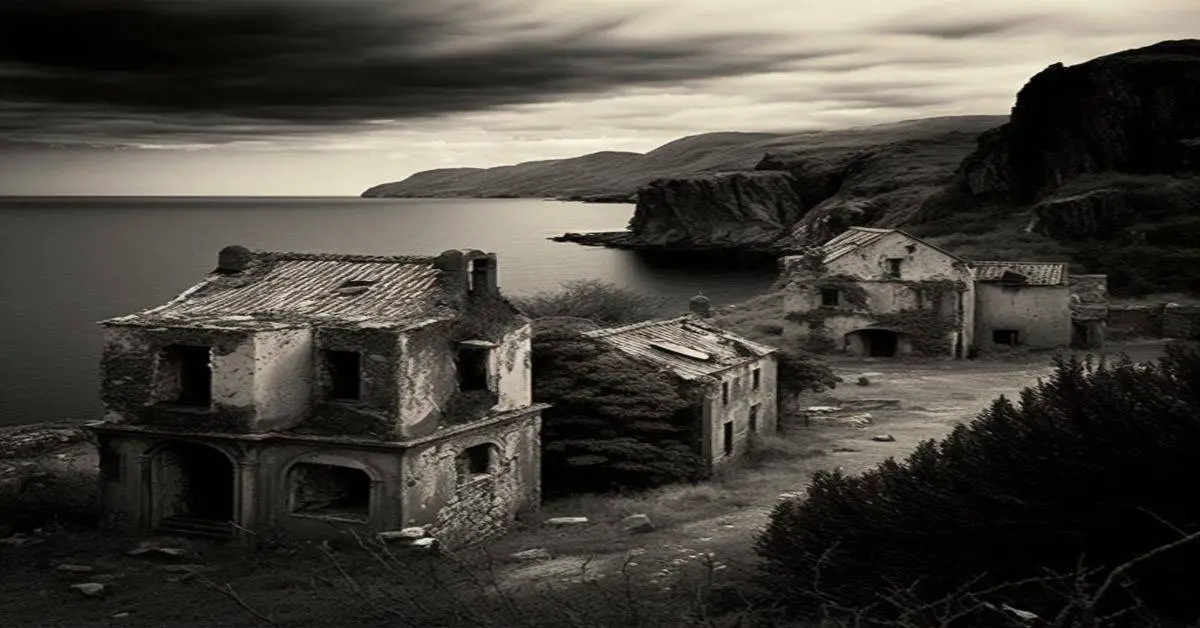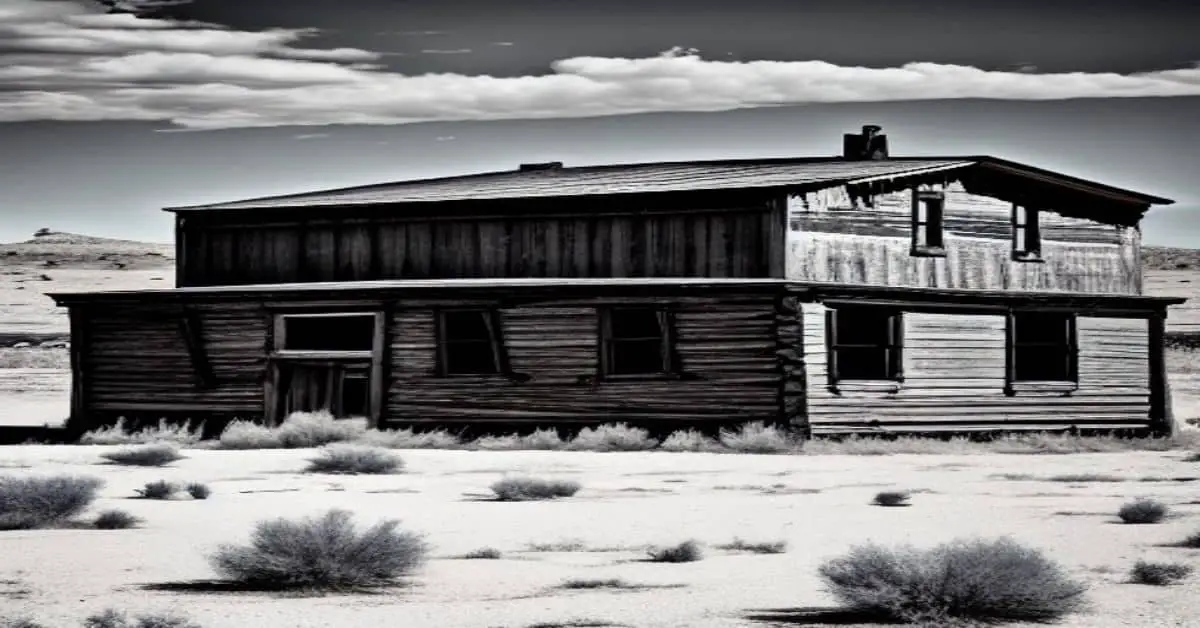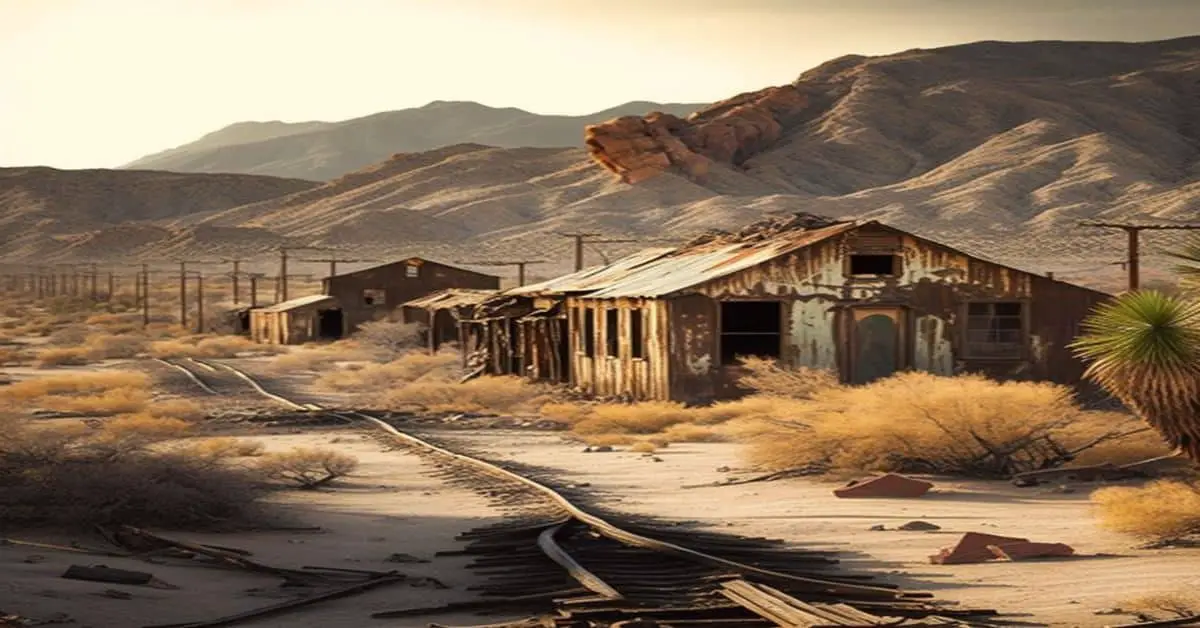Cibola, Arizona is a ghost town steeped in legend and history. Located in La Paz County, near the Colorado River, the town was once a hub of agricultural activity in the Southwest.
However, the failure of an irrigation project led to the town’s downfall, leaving behind a collection of abandoned buildings and eerie silence.
European explorers sought this piece of land for centuries, drawn by the promise of fertile lands.
In 1898, a town was formed in the Cibola valley, and construction began on a canal to bring water from the river to the farms.
Despite the residents’ best efforts, the irrigation project failed, and the town slowly began to decline.
Today, the remains of Cibola tell the story of a once-thriving community and offer a glimpse into the history of the American West.
However, visiting the site requires permission from private property owners, adding an element of exclusivity to this already mysterious place.
In this article, we will explore the location, history, and remains of Cibola, offering insights into the legacy of this legendary ghost town.
Key Takeaways
- Cibola, Arizona is a ghost town in La Paz County that was formed in 1898.
- The failure of the irrigation project led to the downfall of the town.
- Visitors must obtain permission before exploring the ruins, and can engage in outdoor activities such as hiking and camping.
- The remains of the town serve as a reminder of the once-thriving community, which was once a hub of agricultural activity in the Southwest.
Location and Climate
The location of Cibola, a legendary Arizona ghost town, is near the Colorado river, with two dirt roads in Arizona and one paved road in California (4WD recommended). The town is located in La Paz county and can be accessed through T7N, R22W.
Visitors can explore the area’s wildlife and engage in outdoor activities such as hiking and camping. Cibola’s climate features warm winters and hot summers, with temperatures ranging from 70°F to 100°F. Winter and fall are considered the best times to visit due to the milder temperatures.
Visitors are advised to come prepared with appropriate clothing and gear for the outdoor activities they plan to engage in. Despite being a ghost town, Cibola still attracts visitors seeking to explore the area’s history and natural beauty.
History and Formation
Construction of a 16 mile canal was initiated to bring water from the Colorado river to the valley where a town was established in 1898. Cibola valley was once a thriving town that relied heavily on the irrigation project for its survival. The project aimed to bring water to the farms and ranches in the area, hoping this would lead to settlement growth.
Things seemed to be going well for a while, and a post office operated here for 20 years, serving the farms. Unfortunately, the irrigation project failed, leading to the town’s downfall. Despite the initial success, the town could not sustain itself, and its people were forced to move away in search of greener pastures.
The failure of the irrigation project was a major blow to the town, and it marked the beginning of the end for Cibola. Today, the remains of the town serve as a reminder of the once-thriving community that once existed here.
Remains and Visiting Restrictions
Numerous buildings remain on private property in Cibola valley, and visitors must obtain permission before exploring the ruins.
The town of Cibola was once a thriving community that was formed in 1898. The construction of a 16-mile canal was initiated to transport water from the Colorado River to the town. A post office operated in the town from 1903 to 1933, serving the farms in the area. Unfortunately, the irrigation project failed, leading to the town’s downfall.
Today, visitors can still see the remains of the once-prosperous town. Numerous buildings still stand on private property, requiring permission to visit the area. One historical site in the area is the Cibola Stage Stop, which provides a glimpse into the past.
For those interested in exploring the ruins of Cibola, securing permission is essential. It is essential to respect the privacy of the landowners and follow all guidelines set forth by them to ensure that this historic site remains intact for future generations.
Frequently Asked Questions
What caused the irrigation project to fail and ultimately lead to the town’s downfall?
The failure of the irrigation project resulted in the decline of Cibola, causing a lack of water for the farms and ranches in the area. This led to a lack of community sustainability and ultimately the town’s downfall.
Are there any plans to restore or preserve the remaining buildings in Cibola?
No information is available regarding plans for restoration or preservation of the remaining buildings in Cibola. The future of these structures remains uncertain, and their fate is ultimately up to private property owners.
Are there any notable events or stories associated with the town’s post office during its 20 years of operation?
The post office in Cibola operated for 20 years, from 1903 to 1933, serving the farms in the area. No notable events or stories are associated with the post office, but it adds to the town’s historical significance.
Aside from its namesake, are there any legends or myths associated with Cibola?
Legends and folklore are scarce regarding Cibola, aside from its namesake. However, the town’s cultural significance and symbolism as a once-thriving community, reliant on a failed irrigation project, make it a poignant reminder of the challenges faced by settlers in the American Southwest.
Are there any local businesses or attractions in the surrounding area that visitors to Cibola might be interested in visiting?
Visitors to Cibola may explore local businesses, cultural sites, and natural attractions in the surrounding area. Outdoor activities abound, including hiking and birdwatching. Historical landmarks include the Cibola Stage Stop and the remains of the irrigation project.


